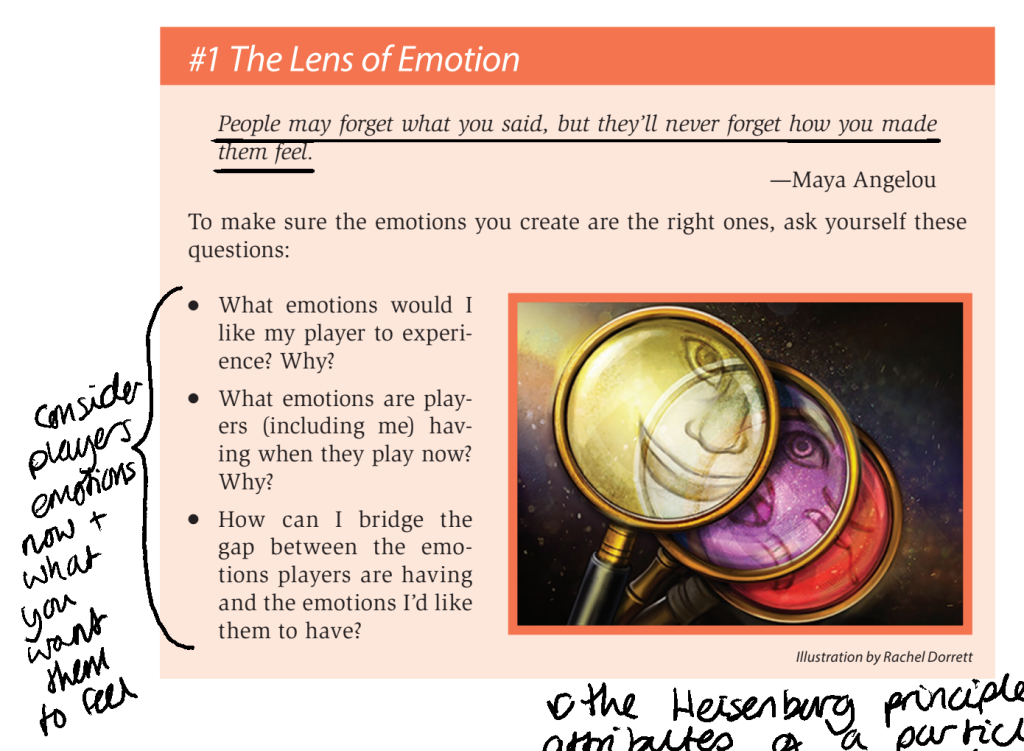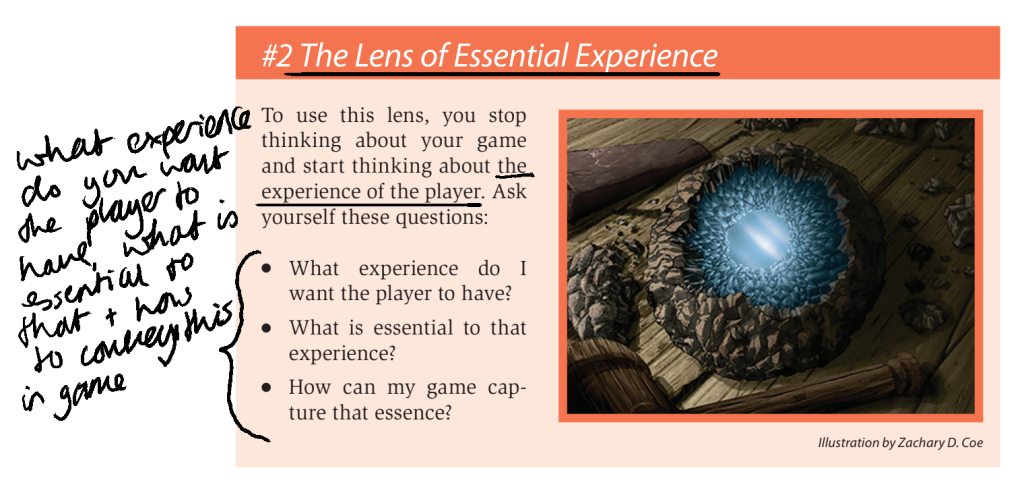Brainstorming
This week we focused on essential experience and adapting these into game ideas to help us come up with a few initial ideas to based our final project on. We initially used metaphors, and, in groups, discussed the essential experience of these metaphors and how this could be adapted into the state of play through audio, visuals, goals, conflicts and mechanics.
Using Rusch’s Questions I created a simple outline for a game idea based on an essential experience:

Using an essential experience as the basis for a game design concept was interesting, and I came up with a simple puzzle game based on the experience of saying goodbye to a friend you can’t see again for a long time. I wanted aspects of Alea games (games of chance) as I think this represents the feeling of lack of control over what is happening in the moment, the player has to react to random events happening.

- Dissect Your Feelings – Emotions are important in analysing games. Putting words to your feelings allows us to think about the kind of experiences we want to create in our own games, ‘The more you analyze your own experiences, the more clearly you will be able to think about the kinds of experiences your game should create’ (Schell, 2019, p.18)

- Resonance – Games based on personal truths can resonate deeply with an audience, ‘…explore your feelings about these things to the point that you can express your theme concretely. It will make it much easier for you to decide what should and shouldn’t go into your game…’ (Schell, 2019, p.68), when you understand your theme you can play into the theme better and create a better story, one that resonates with the audience.

- Essential Experience – You don’t need to perfectly replicate an experience to make a good game, just the essence. Figure out the essential elements that define the experience you want (Schell, 2019, p.22). Essential experience does not necessarily equal real experience, it can be conveyed via: artwork, sound effects, rules, etc.


- Inspiration – Learning from peers and taking from other things in the same medium doesn’t allow for innovation. Looking to the world and things around you for inspiration creates unique ideas.
Applying Schell’s Lenses to my own concepts I made a mind map with the essential experiences I wanted to convey:

Looking at the GDD for Azrael’s Tear, the very first page includes a short description of the game, eleven sentences long, like an elevator pitch. The whole document is split into 14 Chapters, the first of which being a short overview noting the Graphic Features, Gameplay Features and Head-up Display. Notable chapters detail a sample of the game, a history/timeline of the world, character descriptions and pictures, description of the location of the game and the creatures there, a closer look at the gameplay, audio (music, speech, sound effects etc), technical and artistic specification as well as a glossary.


